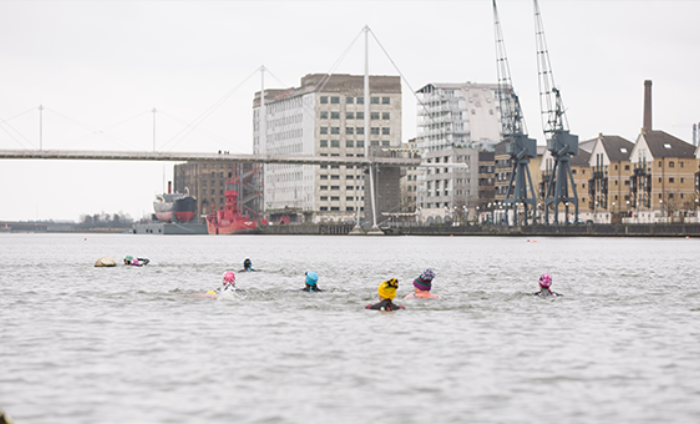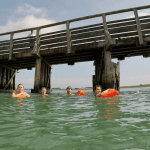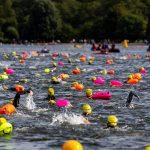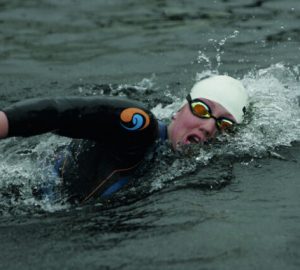
Back to swimming: how to approach your return to swimming outdoors
On 29 March, outdoor swimming pools, lidos, and open water venues are set to reopen as part of the government’s ‘cautious’ four-part roadmap to lift lockdown restrictions in England.
If you plan to return to the water in a few weeks, now is a good time to give some thought about how you might approach your return.
Although I’ve always been a swimmer, I’ve had several periods in my life where I’ve had to take a break because of injury, work and family commitments. These breaks have ranged from a few days to several years. The two things I’ve learned are: (1) you can’t pick up where you left off, and (2) you will get your swimming fitness back. Take heed of the former and be encouraged by the latter.
Hopefully, during this unprecedented universal break from swimming, you will have kept fit, flexible and mobile – or at least, not let it all go completely – so you should be able to make a relatively swift return to form. But you still need a plan to ensure your return to swimming is problem free. The last thing you’ll want when we’re finally allowed in the water is to pick up a swimming related injury that takes you away for even longer or get hypothermia by staying in the water for too long.
There’s a rule of thumb that says it takes two weeks of training to regain each week of fitness lost through not swimming. I can’t find the original source, but even if I could I suspect there to be to be a lot of individual variation. Nevertheless, I can’t dispute the general point that you lose swim fitness quickly and it takes longer to recover it. But recover it you will. Be patient, follow the plan and enjoy the process. You may even end up faster than before.
Unlike when restrictions were eased following the first lockdown last summer, current water temperatures in the UK could still be in single figures. This will be too cold for the majority of swimmers to train properly outdoors, so it’s important not to push your body too hard if you have not been able to keep acclimatised during the break.
Here’s my plan. Please feel free adapt and modify as appropriate for your own circumstances.
Return to swimming plan
During lockdown
Do a regular swim-specific exercise and mobility routine – e.g. spend 10 to 15 minutes each day doing a land-based warm up, as if you were going to swim or check out: outdoorswimmer.com/news/life-in-lockdown-exercises-to-keep-your-body-fit-for-swimming
Swimming visualisation – try to spend a few quiet moments each day imagining yourself swimming.
Acclimatise yourself to the cold with a few cold showers and baths. Not pleasant, but can help lessen the ‘cold water shock’ reaction.
First week back
Keep your swims short – particularly if you are not acclimatised to the cold. Ignore the clock. Listen to your body and know when it’s time to get out. See our cold water section for advice.
Be aware that if you haven’t swam for three months the water is going to be freezing! Try to focus on enjoying the sensation of being back in the water. Notice how it feels on your skin and which underused muscles are working. Listen to the sound of your breath bubbling. Be gentle. Think about slipping through the water rather than applying power. Make it a mindful and celebratory experience.
Continue with your land-based exercises!
Weeks two to four
Indoor pools in England are scheduled to reopen on 12 April. If your local indoor pool is able to reopen at this time, then you can start incorporating longer swims and structure into your training.
First try a longer swim (this will depend on the distances you used to swim before coronavirus), a second swim with some simple interval training and a third where you focus on technique. Keep the intensity light and the distances shorter than you used to do, but push a little harder each week. Note how fast you swim but don’t make comparisons with what you were doing before the break.
If your indoor pool is not open, but you have access to a lido or outdoor venue, continue with short swims, gradually increasing your time in the water. Continue to listen to your body and know when it’s time to get out the water.
Time trial
After about four weeks back in an indoor pool, give yourself a test. Either do a time trial over a distance you’re familiar with or do a Critical Swim Speed (CSS) test (see previous articles on this subject or search for CSS test).
By this time (May) temperatures outdoors should be warm enough to start incorporating some longer swims and more structure into your training. See weeks two to four, then work your way up from there.
Weeks five and beyond
Try to return to your regular pre-break training. However, if we have a long break, it’s likely you will still be slower than before. Base your training intervals on your current speed as measured by your time trial, not what you could swim BC or think you should be able to swim.
If you now train consistently, you should experience a steady recovery in speed and endurance. Test yourself with further time trials every 6 to 8 weeks or so. Keep focused on what you can do now, not what you could do before.
What if I’ve been ill?
Please be extra cautious with your return to training if you’ve been ill. Take medical advice and listen to your body.
Dos and Don'ts
Do
- Take your time to regain fitness.
- Be cautious of the cold if you are swimming outdoors.
- Enjoy the process of regaining your swimming fitness.
- Track and celebrate your improvements.
- Ensure you get sufficient rest and sleep, and eat well.
- Maintain a land-based flexibility and mobility programme.
Don’t
- Risk burn-out by doing too much too soon.
- Risk hypothermia by staying in the water too long.
- Risk injury by returning immediately to your pre-break programme.
- Compare your times to those you were going pre-break.
- Compare your progress with your training buddies. Everyone is different.







